More decorated eggs in the pysanka tradition. And some more historic background. :
Pysanka [Ukrainian Easter Eggs]The art of decorating Easter eggs is one of the most interesting expressions of Ukrainian folk art. This tradition is very old and its beginnings developed in myth in which the egg was perceived as the source of life, the sun and the universe itself. Although similar myths are found in many cultures around the world, Ukrainians are one of the few peoples who strongly adhere to this ancient folklore associated with the egg.
Ukrainian Egg Painting
The Ukrainian tradition of egg decorating dates back thousands of years before Christ; when eggs were an integral part of the celebration of Spring. A variety of symbolic designs and colors were used on the eggs such as a horse (symbolic of strength) or birds (happiness) and geometric lines and circles (symbolic of eternity). With the advent of Christianity, new symbols and icons were added such as the fish.
In central and modern Ukraine, the predominant colors are red and black, whereas in the Carpathian mountains greens, orange, yellow and browns are traditionally used. White is also an important element in most traditional designs, but very difficult to preserve, and thus being lessed used. Dyes were obtained from natural sources: local plants and some inorganic substances. Nowadays, most artists use chemical dyes.
Beeswax is used to decorate the eggs and can be applied in a variety of ways. The traditional way and most skilled among egg-decorating artists is to actually "write" on the surface of the shell itself with melted beeswax using a traditional stylus tool called a "kystka" (or kistka) a kind of stylus pen, usually made of copper. Work begins by applying the pattern, working with the lightest color first (the areas designated to be white in the final design are covered in wax first). Then the egg is dipped into a dye (i.e.red) then sealed with wax. The process continues until all the desired colors have been sealed and the final color applied.If kept at room temperature, away from dust and out of direct sunlight, pysanky will keep for years and years - and eventually harden. Alternatively, the eggs can be blown, strung with coloured ribbon or string, and hung as decorations.
The egg is then held to a candle flame and, as the wax melts, it is gently rubbed off with a soft cloth. Any residue of wax is carefully removed. Finally, the egg is sealed with several layers of varnish or cold glaze.

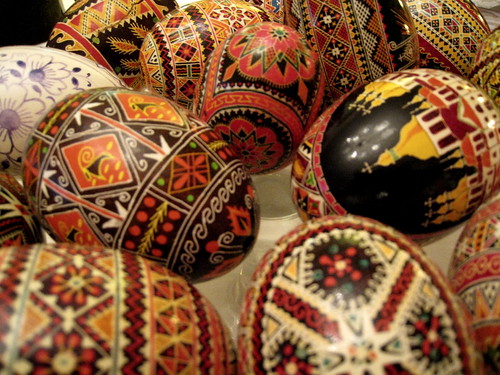
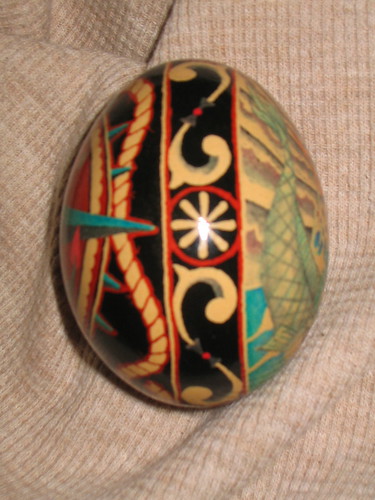

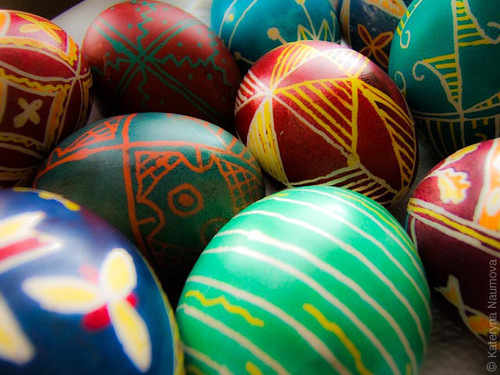
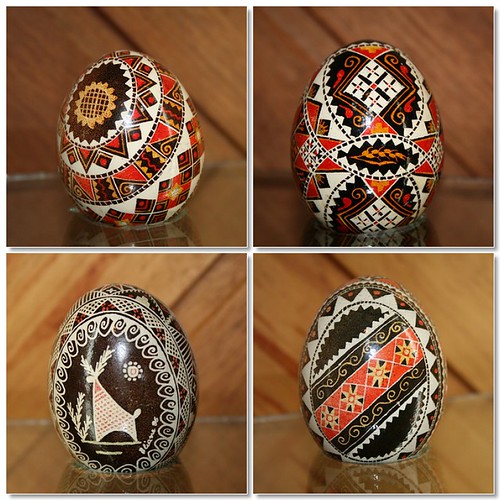
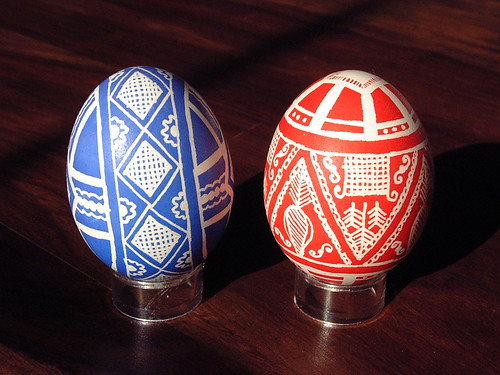
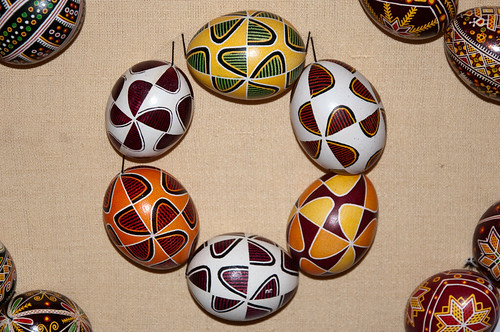
No comments:
Post a Comment